Entry Database : PDB / ID : 6tc2Title Monoclinic human insulin in complex with p-coumaric acid Insulin Keywords / / / / Function / homology Function Domain/homology Component
/ / / / / / / / / / / / / / / / / / / / / / / / / / / / / / / / / / / / / / / / / / / / / / / / / / / / / / / / / / / / / / / / / / / / / / / / / / / / / / / / / / / / / / / / / / / / / / / / / / / Biological species Homo sapiens (human)Method / / / / Resolution : 1.36 Å Authors Triandafillidis, D.-P. / Parthenios, N. / Spiliopoulou, M. / Valmas, A. / Kosinas, C. / Gozzo, F. / Reinle-Schmitt, M. / Beckers, D. / Degen, T. / Pop, M. ...Triandafillidis, D.-P. / Parthenios, N. / Spiliopoulou, M. / Valmas, A. / Kosinas, C. / Gozzo, F. / Reinle-Schmitt, M. / Beckers, D. / Degen, T. / Pop, M. / Fitch, A. / Wollenhaupt, J. / Weiss, M.S. / Karavassili, F. / Margiolaki, I. Funding support Organization Grant number Country General Secretariat for Research and Technology Hellenic Foundation for Research and Innovation 3051
Journal : Acta Crystallogr D Struct Biol / Year : 2020Title : Insulin polymorphism induced by two polyphenols: new crystal forms and advances in macromolecular powder diffraction.Authors: Triandafillidis, D.P. / Parthenios, N. / Spiliopoulou, M. / Valmas, A. / Kosinas, C. / Gozzo, F. / Reinle-Schmitt, M. / Beckers, D. / Degen, T. / Pop, M. / Fitch, A.N. / Wollenhaupt, J. / ... Authors : Triandafillidis, D.P. / Parthenios, N. / Spiliopoulou, M. / Valmas, A. / Kosinas, C. / Gozzo, F. / Reinle-Schmitt, M. / Beckers, D. / Degen, T. / Pop, M. / Fitch, A.N. / Wollenhaupt, J. / Weiss, M.S. / Karavassili, F. / Margiolaki, I. History Deposition Nov 4, 2019 Deposition site / Processing site Revision 1.0 Nov 11, 2020 Provider / Type Revision 1.1 Nov 18, 2020 Group / Category / citation_authorItem _citation.country / _citation.journal_abbrev ... _citation.country / _citation.journal_abbrev / _citation.journal_id_ASTM / _citation.journal_id_CSD / _citation.journal_id_ISSN / _citation.journal_volume / _citation.page_first / _citation.page_last / _citation.pdbx_database_id_PubMed / _citation.title / _citation_author.identifier_ORCID / _citation_author.name Revision 1.2 Jan 24, 2024 Group / Database references / Refinement descriptionCategory chem_comp_atom / chem_comp_bond ... chem_comp_atom / chem_comp_bond / database_2 / pdbx_initial_refinement_model Item / _database_2.pdbx_database_accession
Show all Show less
 Open data
Open data Basic information
Basic information Components
Components Keywords
Keywords Function and homology information
Function and homology information Homo sapiens (human)
Homo sapiens (human) X-RAY DIFFRACTION /
X-RAY DIFFRACTION /  SYNCHROTRON /
SYNCHROTRON /  MOLECULAR REPLACEMENT /
MOLECULAR REPLACEMENT /  molecular replacement / Resolution: 1.36 Å
molecular replacement / Resolution: 1.36 Å  Authors
Authors Greece, 2items
Greece, 2items  Citation
Citation Journal: Acta Crystallogr D Struct Biol / Year: 2020
Journal: Acta Crystallogr D Struct Biol / Year: 2020 Structure visualization
Structure visualization Molmil
Molmil Jmol/JSmol
Jmol/JSmol Downloads & links
Downloads & links Download
Download 6tc2.cif.gz
6tc2.cif.gz PDBx/mmCIF format
PDBx/mmCIF format pdb6tc2.ent.gz
pdb6tc2.ent.gz PDB format
PDB format 6tc2.json.gz
6tc2.json.gz PDBx/mmJSON format
PDBx/mmJSON format Other downloads
Other downloads 6tc2_validation.pdf.gz
6tc2_validation.pdf.gz wwPDB validaton report
wwPDB validaton report 6tc2_full_validation.pdf.gz
6tc2_full_validation.pdf.gz 6tc2_validation.xml.gz
6tc2_validation.xml.gz 6tc2_validation.cif.gz
6tc2_validation.cif.gz https://data.pdbj.org/pub/pdb/validation_reports/tc/6tc2
https://data.pdbj.org/pub/pdb/validation_reports/tc/6tc2 ftp://data.pdbj.org/pub/pdb/validation_reports/tc/6tc2
ftp://data.pdbj.org/pub/pdb/validation_reports/tc/6tc2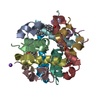
 Links
Links Assembly
Assembly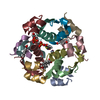
 Components
Components Homo sapiens (human) / Gene: INS / Production host:
Homo sapiens (human) / Gene: INS / Production host: 


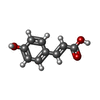
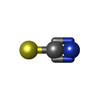





 X-RAY DIFFRACTION / Number of used crystals: 1
X-RAY DIFFRACTION / Number of used crystals: 1  Sample preparation
Sample preparation SYNCHROTRON / Site:
SYNCHROTRON / Site:  BESSY
BESSY  / Beamline: 14.1 / Wavelength: 0.9184 Å
/ Beamline: 14.1 / Wavelength: 0.9184 Å molecular replacement
molecular replacement Processing
Processing MOLECULAR REPLACEMENT
MOLECULAR REPLACEMENT Movie
Movie Controller
Controller



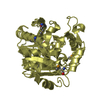
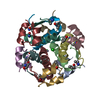
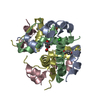


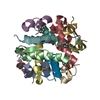
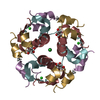
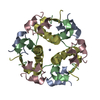
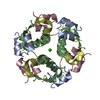

 PDBj
PDBj























